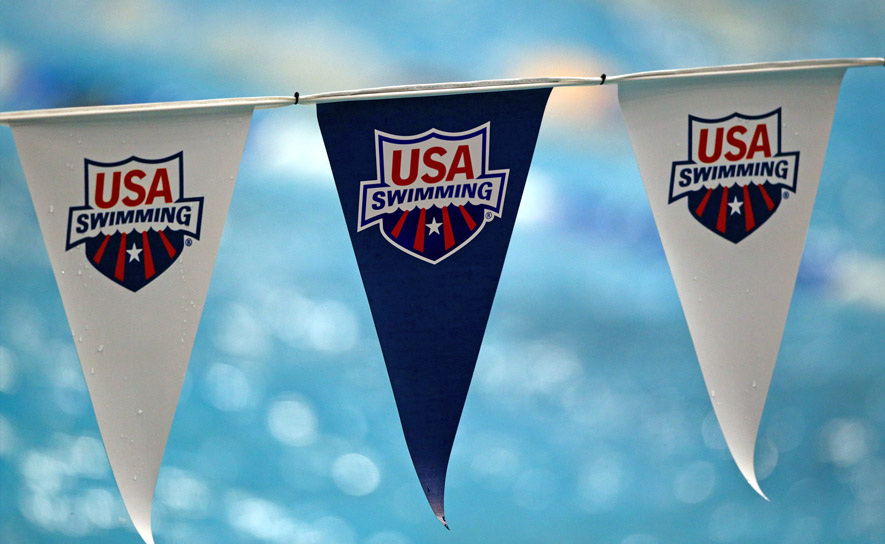USA Swimming News
The Impact of Over-Rotation on Freestyle and Backstroke

by Katie Arnold//National Team High Performance Consultant
In earlier articles our staff has talked about the need for long axis rotation to be short and quick. This snappiness comes from shallower rotation (usually around 30 degrees), rather than the traditional “side-to-side.” When I talk to swimmers about this idea, I refer to this shallow rotation as “rail-to-rail,” with your rails being imaginary lines drawn from the front or back of your shoulders to the front or back of your hips.
Below is a look at the most common negative results of over-rotating in freestyle and backstroke. Each series of three photos is a progression through a single arm stroke for an athlete who over-rotates.
 |
 |
|
 |
 |
|
 |
 |
In freestyle, over-rotating:
- causes a late rotation back to the other side
- which results in a wide catch that is outside the line of the body
- Additionally, as people wait for their rotation to switch over to the other side, the freestyle breath is often delayed and drawn out.
In backstroke, the over-rotation
- also results in a late rotation back to the other side
- which causes the hand to enter behind the head
For both of these strokes, over-rotation also causes a hiccup or pause in the flutter kick when the feet may either cross or splay out to try to re-balance the swimmer.
